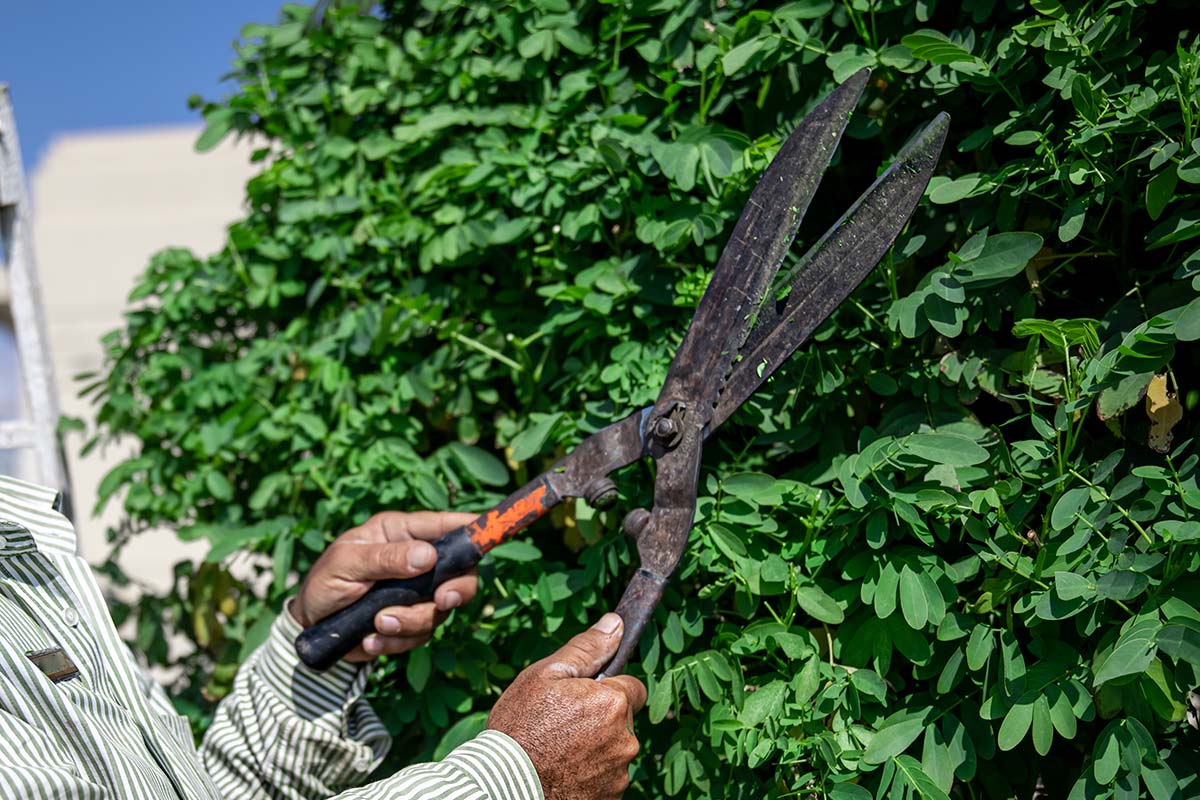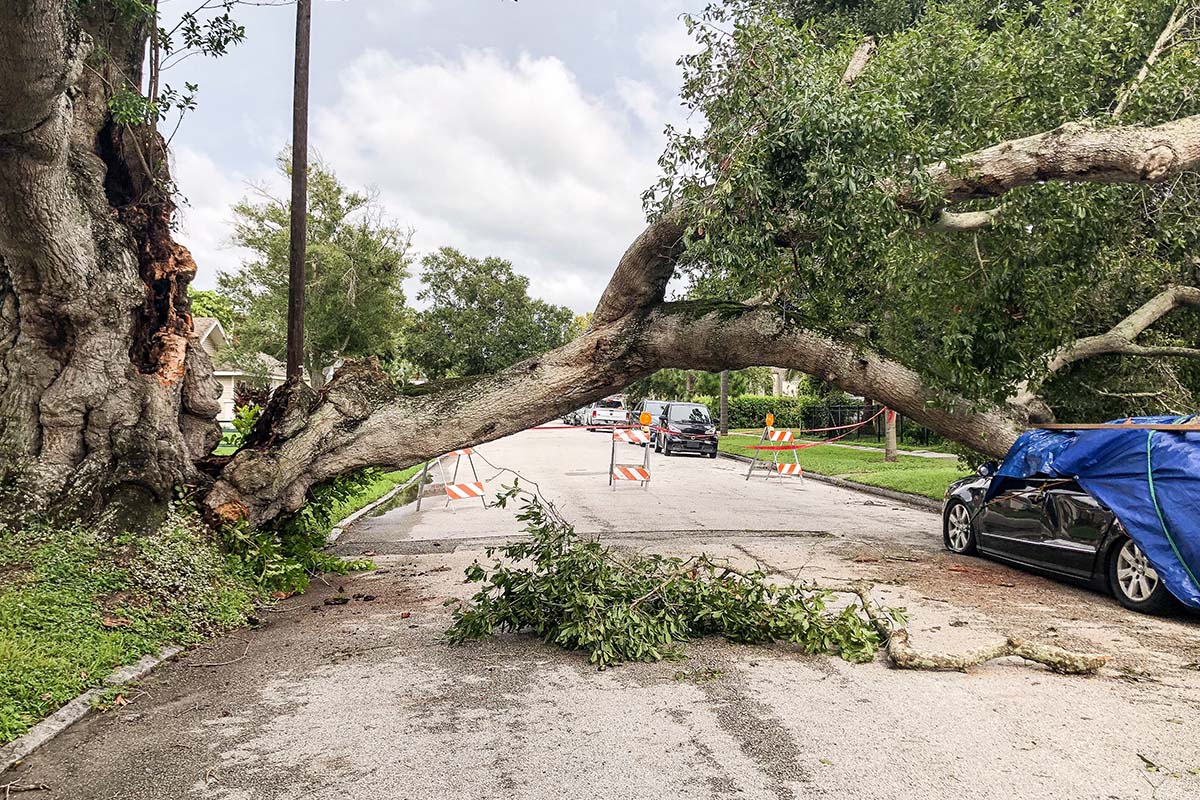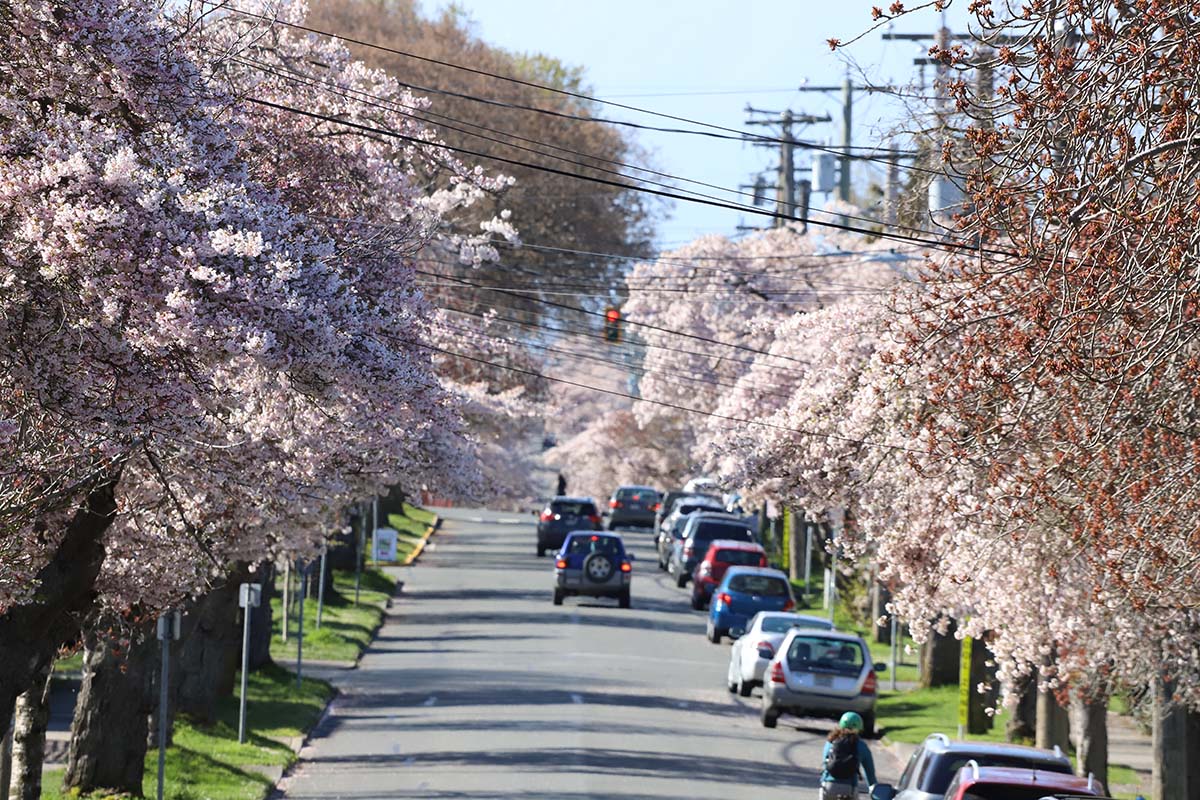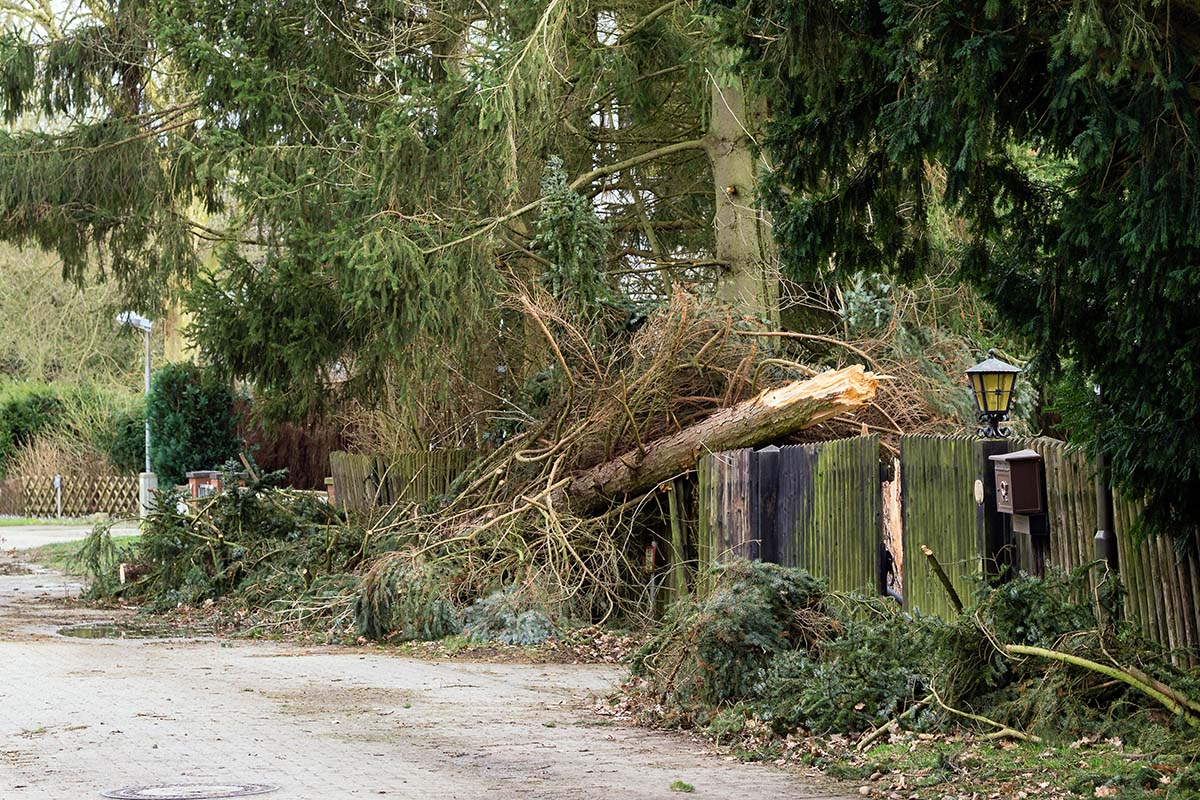
Welcome to our article on the importance of tree trimming in Burbank! Tree trimming is a crucial aspect of tree care that can help to maintain the safety, health, aesthetics, and utility of trees. Whether you’re a homeowner, a business owner, or a property manager, it is important to understand the benefits of tree trimming and the potential consequences of neglecting this important aspect of tree care.
In this article, we will explore the top reasons why tree trimming is important in Burbank and provide some tips for maintaining the health and beauty of your trees. We will also discuss any legal requirements or regulations related to tree trimming and provide some helpful resources for those who want to learn more about tree care.
By the end of this article, you should have a better understanding of why tree trimming is important and how to properly care for your trees. Let’s get started!
Some key takeaways from this article include:
- Tree trimming can help to reduce the risk of branches falling and causing damage or injury.
- Tree trimming can help to improve the overall health of trees by removing dead branches or diseased branches and preventing the spread of diseases and pests.
- Tree trimming can enhance the appearance of trees and improve the curb appeal of a property.
- Tree trimming can help to maintain the utility of trees by removing branches that may interfere with power lines or obstruct views.
- Tree trimming can help to maintain or increase the value of a property through improved aesthetics and safety.
- Tree trimming can help to prevent damage to trees during storms by removing damaged or weak branches.
- Tree trimming can help to improve the energy efficiency of a home or business by allowing more sunlight to reach the building.
- Tree trimming can help to improve soil health by maintaining the root systems of trees and promoting the growth of beneficial microorganisms in the soil.
Safety Reasons

Types of Accidents or Damage Caused by Falling Branches
Falling branches can cause a wide range of accidents or damage, depending on the size and location of the branch and the circumstances under which it falls. Some common types of accidents or damage caused by falling branches include:
- Property damage: Falling branches can cause damage to buildings, fences, cars, or other structures on a property. This type of damage can range from minor cosmetic issues to more serious structural damage, depending on the size and force of the branch.
- Personal injury: Falling branches can also cause injury to people, either by hitting them directly or by causing them to trip or fall. These injuries can range from minor scrapes and bruises to more serious injuries, such as broken bones or head injuries.
- Power outages: If a falling branch comes into contact with power lines, it can cause a power outage or electrical damage to the lines. This can be a serious safety hazard and can also disrupt essential services such as electricity and phone service.
- Environmental damage: In some cases, falling branches can cause damage to the environment, such as by disrupting animal habitats or damaging natural resources.
Overall, the risks and consequences of falling branches can vary widely, depending on the specific circumstances of the incident. However, it is important to take steps to prevent falling branches through regular tree trimming and other tree maintenance practices to reduce the risk of accidents or damage.
Falling branches can cause a wide range of accidents or damage, including:
- Injury to people: Branches can fall and cause injury to people who are passing by or who are working near the tree.
- Property damage: Branches can fall and cause damage to buildings, cars, or other structures.
It is important to maintain the structural integrity of trees through regular trimming to prevent these types of accidents. By removing damaged or diseased branches in a timely manner, you can help to reduce the risk of falling branches.
Legal and Ethical Responsibilities of Tree Owners
As a tree owner, it is your legal and ethical responsibility to maintain the safety of your trees. This includes regular inspections to identify any potential hazards and timely removal of diseased or damaged branches.
There may also be legal requirements or regulations related to tree trimming and safety, such as those related to property lines or tree maintenance ordinances. It is important to familiarize yourself with these requirements and to follow them to avoid potential fines or legal issues.
Consequences of Neglecting Tree Trimming for Safety Purposes
Neglecting tree trimming for safety purposes can have serious consequences, including:
- Fines: If you fail to follow legal requirements or regulations related to tree trimming and safety, you may be subject to fines.
- Legal liability: If a falling branch from your tree causes damage or injury, you may be held legally liable for the resulting damages.
It is important to prioritize tree trimming for safety purposes to avoid these potential consequences.
Tree Health

Tree trimming can also help to improve the overall health of trees by removing dead or diseased branches. Dead or diseased branches can harbor tree diseases and pests, which can spread to other parts of the tree if left untreated. By removing infected branches, you can help to prevent the spread of diseases and pests and improve the overall health of a tree.
Tree trimming can remove any portions that have a disease, fungi, or other types of decay, preventing it from spreading to healthier branches. By removing these infected or diseased branches, tree trimming can also expose the remaining branches to more sunlight and air circulation. This increased exposure to light and air can help to promote the overall health of the tree by strengthening the branches and reducing the risk of further disease. In addition, the improved air circulation that results from tree trimming can help to reduce the incidence of disease by promoting the flow of oxygen through the tree and helping to prevent the buildup of moisture or other conditions that can support the growth of fungi or other pests.
Maintaining a regular tree trimming schedule helps to keep trees strong and promotes their overall health and structure. By removing damaged or diseased branches, tree trimming can help to prevent the spread of decay and other problems within the tree. In addition, regular trimming can help to shape and train the tree, encouraging the growth of strong, healthy branches and reducing the need for corrective pruning in the future. Overall, by keeping up with regular tree trimming, you can help to ensure that your trees are healthy and well-maintained, and reduce the need for costly and time-consuming corrective pruning in the future.
Defining Tree Diseases and Pests
Tree diseases and pests can cause a wide range of problems for trees, including reduced tree vigor, stunted growth, and tree death. Some common tree diseases and pests include:
- Fungal diseases: Fungal diseases can cause a variety of problems for trees, including leaf spot, leaf blight, and root rot.
- Bacterial diseases: Bacterial diseases can cause problems such as crown gall, which can lead to stunted growth and reduced tree vigor.
- Insects and pests: Insect pests can cause damage to tree leaves, stems, and roots, and can also transmit diseases. Some common insects and pests include aphids, borers, and scale.
Importance of Removing Infected Branches
By removing infected branches, you can help to prevent the spread of diseases and pests to other parts of the tree. This can help to maintain the overall health and vigor of a tree and can improve its growth and longevity.
Consequences of Neglecting Tree Trimming for Health Purposes
Neglecting tree trimming for health purposes can have serious consequences, including:
- Tree death: If a tree is severely infected with a disease or infested with pests, it may die.
- Reduced tree vigor: If a tree is not properly maintained, it may become weakened or stressed, which can reduce its vigor and overall health.
Regular Tree Pruning for Increased Growth and Longevity
Regular tree pruning can help to stimulate new growth and encourage the development of strong, healthy branches. Proper pruning can also help to maintain the overall shape and structure of a tree, which can improve its appearance and utility.
It is important to prune trees at the right time of year to maximize the benefits of pruning. Different tree species have different tree pruning requirements, so it is important to consult with a certified arborist or a tree professionals to determine the appropriate pruning schedule for a particular tree.
Proper Tree Pruning Techniques
Proper tree pruning techniques are essential to avoid causing unnecessary stress or damage to a tree. Some key considerations when pruning trees include:
- Use the right tools: Make sure to use the appropriate tools for the job, such as pruning shears, loppers, or saws.
- Make clean cuts: Avoid leaving stubs or tearing bark when making cuts. Use clean, sharp tools to make smooth, precise cuts.
- Prune at the right time: As mentioned earlier, it is important to prune trees at the right time of year to minimize stress and maximize the benefits of pruning.
- Prune for the right reasons: Only prune branches that are damaged, diseased, or otherwise problematic. Avoid pruning healthy branches unless it is necessary for the health or appearance of the tree.
Disease and Pest Prevention
In addition to improving the overall health of a tree, trimming and pruning trees can also help to prevent or control the spread of diseases and pests within a tree. By removing infected branches and taking other preventive measures, you can help to protect the health of a tree and reduce the risk of problems caused by diseases and pests.
Consequences of Neglecting Tree Trimming for Disease and Pest Prevention
If tree trimming is neglected for disease and pest prevention purposes, the tree may become severely infected or infested, which can lead to reduced tree vigor or tree death. It is important to prioritize tree trimming for disease and pest prevention to avoid these potential consequences.
Trimming and pruning trees are an essential aspect of tree care that is important for maintaining the safety, health, aesthetic appeal, and utility of trees. By trimming trees regularly, you can help to reduce the risk of accidents, improve the overall health and vigor of a tree, and enhance the appearance and utility of your property. It is important to understand the benefits of tree trimming and the potential consequences of neglecting this important aspect of tree care.
Aesthetics

Tree trimming can also play a significant role in maintaining the appearance of trees and enhancing the overall aesthetic of a property. Trimmed trees can improve the curb appeal of a home or business and increase its value.
Improving Curb Appeal and Property Value
Well-maintained trees can significantly enhance the appearance of a property and increase its value. Trimmed trees can create a more attractive and inviting landscape, which can boost the curb appeal of a home or business. This can be especially important when selling a property, as potential buyers often place a high value on attractive landscaping.
Enhancing the Appearance of Trees
There are many different ways that tree trimming can be used to enhance the appearance of trees, such as by shaping or thinning the tree to create a desired form or silhouette. Proper pruning can also help to maintain the natural shape and character of a tree while enhancing its appearance.
It is important to maintain the natural shape and character of a tree while trimming for aesthetics. This can help to preserve the tree’s unique qualities and beauty, and can also help to minimize stress on the tree.
Consequences of Neglecting Tree Trimming for Aesthetics Purposes
If tree trimming is neglected for aesthetics purposes, the tree may become overgrown or poorly shaped, which can negatively impact the appearance of a property. It is important to prioritize tree trimming for aesthetics purposes to avoid these potential consequences.
Trimming is an essential aspect of tree care that is important for maintaining the safety, health, aesthetics, and utility of trees. By trimming trees regularly, you can help to enhance the appearance of your property and improve its value. It is important to understand the benefits of tree trimming and the potential consequences of neglecting this important aspect of tree care.
Utility

Tree trimming can also help to maintain the utility of trees, such as by removing branches that may interfere with power lines or obstruct views. Proper tree trimming can help to reduce the risk of accidents and maintain the functionality of trees in urban environments.
Maintaining Trees in Urban Environments
In urban environments, trees may come into contact with a variety of utilities and infrastructure, such as power lines, roads, sidewalks, and buildings. Regular trimming can help to prevent interference with these utilities and can maintain the functionality of trees in urban environments.
Safety Hazards of Branches Interfering with Power Lines or Other Utilities
Branches that interfere with power lines or other utilities can pose significant safety hazards. For example, branches that come into contact with power lines can cause electrical outages or fires. It is important to regularly trim trees to prevent branches from interfering with power lines or other utilities.
Consequences of Neglecting Tree Trimming for Utility Purposes
If tree trimming is neglected for utility purposes, trees may interfere with utilities or infrastructure, which can lead to damaged utilities or reduced accessibility. It is important to consider the utility of a tree when trimming and to prioritize tree trimming for utility purposes to avoid these potential consequences.
Trimming trees is an essential aspect of tree care that is important for maintaining the safety, health, aesthetics, and utility of trees. By trimming trees regularly, you can help to maintain the functionality of trees in urban environments and reduce the risk of accidents or damage to utilities. It is important to understand the benefits of tree trimming and the potential consequences of neglecting this important aspect of tree care.
Property Value and Curb Appeal

Tree trimming can also have a significant impact on property value, including the potential to increase the value of a property through improved aesthetics and safety. Proper tree care can help to maintain the value of a property and can enhance its curb appeal and overall appeal to potential buyers or renters.
Impact of Tree Trimming on Property Value
Regular tree trimming can help to maintain the value of a property by enhancing its aesthetics and improving its safety. Trimmed trees can create a more attractive and inviting landscape, which can boost the curb appeal of a home or business. This can be especially important when selling a property, as potential buyers often place a high value on attractive landscaping.
In addition to improving the aesthetics of a property, tree trimming can also help to increase its value by improving safety. By removing dead or diseased branches and maintaining the structural integrity of trees, you can help to reduce the risk of accidents or damage to property.
Impact of Tree Trimming on Property Insurance Premiums
Maintaining the safety of trees through regular trimming can also have an impact on property insurance premiums. By reducing the risk of accidents or damage caused by falling branches, you may be able to reduce your property insurance premiums. It is important to consult with your insurance provider to determine how tree trimming can impact your insurance premiums.
Consequences of Neglecting Tree Trimming for Property Value Purposes
If tree trimming is neglected for property value purposes, the tree may become overgrown or poorly shaped, which can negatively impact the appearance and value of a property. It is important to prioritize tree trimming for property value purposes to avoid these potential consequences.
By trimming trees regularly, you can help to maintain the value of a property and enhance its curb appeal and overall appeal to potential buyers or renters. It is important to understand the benefits of tree trimming and the potential consequences of neglecting this important aspect of tree care.
Storm Damage Prevention

Tree trimming can also play a significant role in helping to prevent damage to trees during storms. By removing damaged or weak branches before they can break off during high winds, you can help to reduce the risk of storm damage to trees.
Preventing Storm Damage to Trees
Storms can cause a variety of damage to trees, including broken branches, uprooted trees, and toppled trees. Falling branches can also cause injury to people or damage to property. By removing damaged or weak branches before they can break off during a storm, you can help to reduce the risk of storm damage to trees.
Importance of Regular Trimming for Storm Damage Prevention
Regular trimming can help to identify and remove damaged or weak branches before they can break off during a storm. This can help to reduce the risk of storm damage to trees and can also help to prevent accidents or damage to property.
Consequences of Neglecting Tree Trimming for Storm Damage Prevention Purposes
If tree trimming is neglected for storm damage prevention purposes, the tree may be more vulnerable to damage during storms. This can increase the risk of accidents or damage to property. It is important to prioritize tree trimming for storm damage prevention purposes to avoid these potential consequences.
By trimming trees regularly, you can help to reduce the risk of storm damage to trees and prevent accidents or damage to property. It is important to understand the benefits of tree trimming and the potential consequences of neglecting this important aspect of tree care.
Legal Requirements
There may be various legal requirements or regulations related to tree trimming, such as those related to property lines or tree maintenance ordinances. It is important to understand and follow these requirements to avoid potential fines or legal issues.
Understanding Legal Requirements for Tree Trimming
Legal requirements for tree trimming can vary depending on your location and the specific circumstances of your property. These requirements may include rules related to property lines, tree maintenance ordinances, or other regulations. It is important to familiarize yourself with these requirements and to follow them when trimming trees.
Importance of Following Legal Requirements
Failing to follow legal requirements for tree trimming can result in fines or other legal issues. It is important to understand and follow these requirements to avoid potential consequences.
Consequences of Neglecting Tree Trimming for Legal Purposes
If tree trimming is neglected for legal purposes, you may be at risk of fines or other legal liabilities. It is important to prioritize tree trimming for legal purposes to avoid these potential consequences.
There may be various legal requirements or regulations related to tree trimming that vary depending on location and circumstances. These may include rules related to property lines, tree maintenance ordinances, or other regulations. It is important to understand and follow these requirements to avoid potential fines or legal issues, such as fines or other legal liabilities. Tree trimming is an important aspect of tree care that is necessary for maintaining the safety, health, aesthetics, and utility of trees, and it is important to prioritize it to avoid potential consequences.
Structural Improvement
Tree trimming can also be used to shape or train a tree to grow in a certain way, such as by removing certain branches to improve the overall structure of the tree. There are various techniques that can be used to shape or train a tree, including selective pruning, heading back, or thinning.
Shaping or Training a Tree
When shaping or training a tree, it is important to consider the natural shape and character of the tree. Different techniques can be used to shape or train a tree, such as selective pruning, heading back, or thinning. These techniques can help to improve the overall structure of the tree and can also be used to control the growth or shape of a tree.
Importance of Proper Tree Trimming Techniques
It is important to use proper tree trimming techniques to avoid causing unnecessary stress or damage to a tree. Incorrect trimming techniques can cause damage to a tree and may even shorten the tree’s life.
Consequences of Neglecting Tree Trimming for Structural Improvement Purposes
If tree trimming is neglected for structural improvement purposes, the tree may develop an unstable or poorly shaped structure. This can lead to a variety of problems, including increased risk of storm damage or reduced tree vigor. It is important to prioritize tree trimming for structural improvement purposes to avoid these potential consequences.
Tree trimming can also be used to shape or train a tree to grow in a certain way, improving its structure and reducing the risk of storm damage. It is important to consider the natural shape and character of the tree when shaping or training it and to use proper tree trimming techniques to avoid causing unnecessary stress or damage. Neglecting tree trimming for structural improvement purposes can lead to an unstable or poorly shaped tree, which may result in reduced tree vigor or increased risk of storm damage. In addition to these benefits, tree trimming can also have an impact on energy conservation.
Energy Conservation
In addition to the benefits mentioned earlier, tree trimming can also help to improve the energy efficiency of a home or business by allowing more sunlight to reach the building. By strategically trimming trees to increase natural lighting and reduce the need for artificial lighting or heating/cooling, you can help to improve the energy efficiency of your property.
Improving Thermal Performance with Tree Trimming
Tree trimming can also help to improve the thermal performance of a building by allowing more sunlight to reach the building in the winter and providing shade in the summer. This can help to reduce the need for heating or cooling and can improve the overall energy efficiency of a building.
Importance of Considering Location and Orientation
When trimming trees for energy conservation purposes, it is important to consider the location and orientation of the tree. This can help to maximize the benefits of tree trimming for energy conservation and can also help to avoid causing unnecessary stress or damage to the tree.
Financial Benefits of Tree Trimming for Energy Conservation
In addition to the environmental benefits, tree trimming for energy conservation can also have financial benefits, such as reduced energy bills. By improving the energy efficiency of your property through tree trimming, you may be able to save money on your energy bills.
Tree trimming can improve the energy efficiency of a home or business by allowing more sunlight to reach the building and reducing the need for artificial lighting or heating/cooling. It can also improve the thermal performance of a building by allowing more sunlight in the winter and providing shade in the summer, which can help to reduce the need for heating or cooling and improve the overall energy efficiency of a building. When trimming trees for energy conservation purposes, it is important to consider the location and orientation of the tree to maximize the benefits and avoid causing unnecessary stress or damage. Tree trimming for energy conservation can also have financial benefits, such as reduced energy bills.
Water Conservation
Water conservation is an important concern in many areas, especially in states like California where dry heat and drought conditions have been a frequent occurrence in recent years. Tree trimming can help to improve water conservation by reducing the amount of water that a tree needs to thrive.
Reducing Water Needs with Tree Trimming
By trimming trees regularly, you can help to reduce the amount of water that a tree needs to thrive. This can be especially important in dry or drought-prone areas, where water resources may be limited. Trimming trees can help to remove excess foliage and branches, which can help to reduce the amount of water that a tree needs to maintain its growth and health.
Importance of Water Conservation
Water conservation is important for a variety of reasons, including preserving natural resources, protecting the environment, and saving money on water bills. By trimming trees to improve water conservation, you can help to reduce your water usage and make a positive impact on the environment.
By trimming trees regularly, you can help to improve water conservation and reduce the amount of water that a tree needs to thrive. This can be especially important in dry or drought-prone areas, where water resources may be limited. Tree trimming is an important part of responsible tree care, and it can help to preserve natural resources, protect the environment, and save money on water bills.
Soil Health
Tree trimming can have a significant impact on soil health, and it is important to consider the root systems of trees when trimming to avoid causing harm to the tree or the soil.
The root systems of trees play a critical role in promoting soil health because they help to anchor the tree in place, provide support for the tree’s growth, and absorb water and nutrients from the soil. When tree roots are healthy, they can help to improve the tree structure of the soil around a tree by increasing the soil’s ability to retain water and nutrients.
However, if the root systems of trees are damaged or weakened, it can have negative consequences for soil health. For example, damaged or weakened roots may be unable to absorb water and nutrients from the soil effectively, which can lead to reduced tree growth and vigor. In addition, damaged or weakened roots may be unable to provide adequate support for the tree, which can increase the risk of the tree falling or being damaged during a storm.
To avoid damaging the root systems of trees when trimming, it is important to follow proper trimming techniques and consider the location and orientation of the tree. Trimming should be done carefully and selectively, with the goal of maintaining the natural shape and character of the tree while improving its overall health and structure.
Roots play a critical role in promoting soil health because they help to anchor the tree in place, provide support for the tree’s growth, and absorb water and nutrients from the soil. When tree roots are healthy, they can help to improve the structure of the soil around a tree by increasing the soil’s ability to retain water and nutrients.
Tree roots also help to promote soil health by increasing the diversity of microorganisms in the soil. As roots grow and die, they release nutrients and organic matter into the soil, which can help to promote the growth of beneficial microorganisms such as fungi and bacteria. These microorganisms can help to break down organic matter and improve the structure of the soil, making it more fertile and better able to support plant growth.
However, if the root systems of trees are damaged or weakened, it can have negative consequences for soil health. For example, damaged or weakened roots may be unable to absorb water and nutrients from the soil effectively, which can lead to reduced tree growth and vigor. In addition, damaged or weakened roots may be unable to provide adequate support for the tree, which can increase the risk of the tree falling or being damaged during a storm.
Tree trimming can impact the function of roots in promoting soil health in a number of ways. If done correctly, trimming can help to improve the overall health and structure of the tree, which can in turn help to improve the health of the soil around the tree. However, if the trimming is not done correctly, it can damage or weaken the root systems of trees, which can have negative consequences for soil health.
Overall, it is important to consider the root systems of trees when trimming to ensure that the trimming is done in a way that promotes the health and function of the roots in promoting soil health.
Overall, it is important to prioritize trimming as a necessary aspect of tree care to ensure that trees are healthy, safe, and well-maintained. Neglecting can have a number of negative consequences, including damaged or unhealthy trees, legal issues, or reduced property value. By properly caring for your trees through regular trimming, you can help to improve the health and appearance of your trees and ensure that they are a valuable asset to your property.
FAQ
Trimming and tree pruning are important for maintaining the safety, health, aesthetics, and utility of trees. They can help to remove damaged limbs or diseased branches, improve the overall appearance of a tree, maintain the utility of a tree, and enhance the value of a property. Neglecting this can lead to damaged or unhealthy trees, legal issues, or reduced property value.
While trees do not necessarily need to be trimmed, regular trimming can help to maintain the safety, health, aesthetics, and utility of a tree. Trimming can also help to prevent damage during storms and can be required by law in some cases. Neglecting to trim your trees can lead to damaged or unhealthy trees, legal issues, or reduced property value.
Proper trimming and pruning can actually help trees to grow healthier and more vigorously. Removing damaged or diseased branches can help to redirect the tree’s energy to other parts of the tree, and regular pruning can encourage the growth of strong, healthy branches. However, it is important to trim trees correctly to avoid causing unnecessary stress or damage. Improper trimming can actually harm a tree’s growth and health.
The frequency of trimming will depend on the species of tree, its age, and its location. Some trees may only need to be trimmed every few years, while others may need to be trimmed annually. It is generally recommended to trim trees when they are young to shape their growth and to remove any damaged or diseased branches as needed. It is important to consult with a certified arborist or a tree care professional to determine the appropriate trimming schedule for a particular tree.
It is generally recommended to hire a certified arborist or a tree care professional for tree trimming, especially for larger or more mature trees. Trimming trees can be physically demanding and requires specialized knowledge and equipment. An arborist or tree care professional will have the necessary training, experience, and equipment to trim trees safely and effectively. However, small trees or shrubs that are within reach may be trimmed by a homeowner if proper safety precautions are followed.
There are several signs that may indicate that a tree needs to be trimmed, such as:
Dead or diseased branches
Branches that are rubbing against each other or crossing over
Branches that are growing too close to power lines or other utilities
Branches that are growing too close to buildings or other structures
An overall overgrown or poorly shaped tree
If a tree exhibits any of these signs or if there is any doubt about its health or maintenance needs, it is recommended to consult with a certified arborist or a tree care professional for advice.

